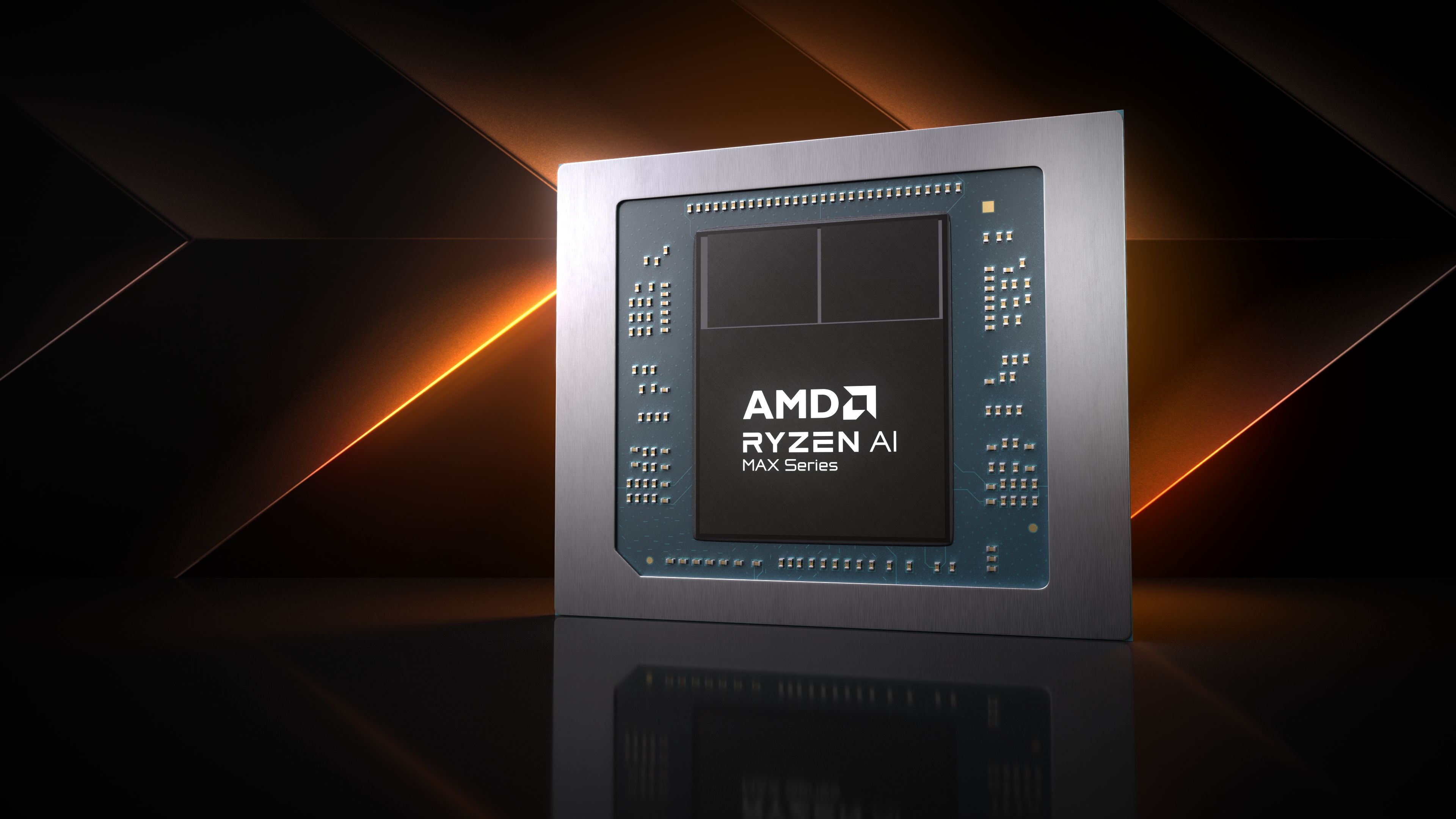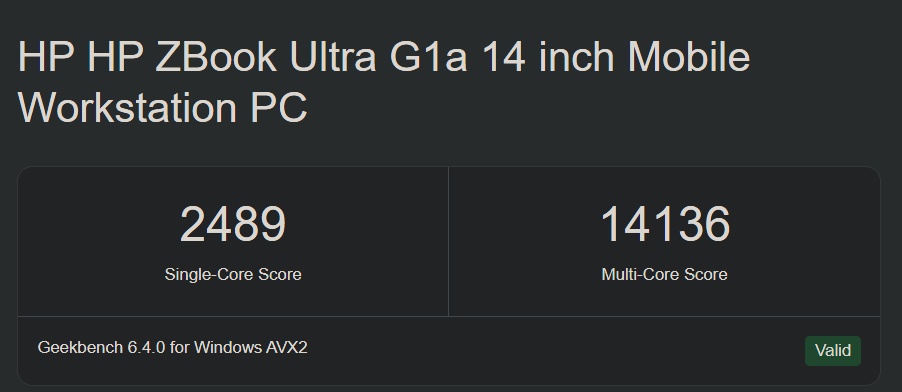More affordable Strix Halo model emerges — Early Ryzen AI Max 385 Geekbench result reveals an eight-core option
Performance may not be as impressive as we expected.

We're seeing traces of AMD's more affordable Strix Halo options, with the octa-core Ryzen AI Max 385 marking its debut on Geekbench. Powering the HP ZBook Ultra G1a, Strix Halo appears poised to expand into the mainstream segment with eight and six-core variations. Performance indicators in Geekbench aren't as impressive as we expected, though we shouldn't consider them as definitive due to this being a leak, typical run-to-run variations, and laptop power settings.
CES marked the debut of AMD's flagship APU family this generation, Strix Halo, under the Ryzen AI 300 Max line, for AI/ML developers and gamers. AMD launched four different variants, ranging from 6-16 CPU cores and 16-40 GPU cores, catering to a wide range of consumers. Most of the first and second quarters have been occupied by the premier Ryzen AI Max+ 395 and 390, with mini-PCs costing up to $2,000. Meanwhile, laptops, limited to the HP Zbook Ultra G1a and Asus ROG Flow Z13, exceed the $5,000 price point, fully decked out with 128GB of LPDDR5x RAM.
The Ryzen AI Max 385 sports eight cores and sixteen threads based on the Zen 5 architecture, alongside a 32 Compute Unit equipped integrated GPU (Radeon 8050S) based on RDNA 3.5 and a 50 TOPS capable NPU. The CPU is advertised to reach 5 GHz, only 100 MHz below the flagship model. This suggests similar single-core performance, but the actual results indicate otherwise.

In Geekbench, this specific sample of Ryzen AI Max 385 dished out 2,489 points and 14,136 points in the single-core and multi-core categories, respectively. This is considerably slower than comparable samples of the Ryzen AI Max+ 395, hovering in the 2,900-3,000 points territory (single-core). There aren't any signs of thermal throttling, as the CPU averaged between 4.95 GHz and 5 GHz. Still, we shouldn't consider these early benchmarks as definitive, as several variables could be at play here.
The test bench in this case was the aforementioned HP ZBook Ultra G1a with 32GB of LPDDR5x memory. HP's website confirms the existence of such a model, listed at an eye-watering $2,599, with shipments starting tomorrow. As of writing, Asus' Flow Z13 doesn't offer a configuration below the 12-core Ryzen AI Max 390. The Framework Desktop is configurable with the Ryzen AI Max 385, with shipments expected in Q3 (July to September) 2025. Meanwhile, only HP's upcoming Z2 Mini G1a mini workstations sport the entry-level hexacore Ryzen AI Max 380.
Follow Tom's Hardware on Google News to get our up-to-date news, analysis, and reviews in your feeds. Make sure to click the Follow button.
Stay On the Cutting Edge: Get the Tom's Hardware Newsletter
Get Tom's Hardware's best news and in-depth reviews, straight to your inbox.

Hassam Nasir is a die-hard hardware enthusiast with years of experience as a tech editor and writer, focusing on detailed CPU comparisons and general hardware news. When he’s not working, you’ll find him bending tubes for his ever-evolving custom water-loop gaming rig or benchmarking the latest CPUs and GPUs just for fun.
-
Notton I would guess the difference is caused by Cache size.Reply
It's 80MB for 395 and 40MB for 385 -
bit_user Reply
That won't affect single-core performance, since a core only has direct access to the L3 cache on its CCD (which is 32 MB, in each case).Notton said:I would guess the difference is caused by Cache size.
It's 80MB for 395 and 40MB for 385
Even multi-threaded performance doesn't really benefit from the extra cache, other than a bump when you go from one CCD to two, because what usually matters is the per-core L3 cache. -
usertests It's an anomalous result, and the graphics performance is where the real action is. Even AI users probably won't care about this SKU unless it's often paired with 64-128 GB and offered significantly cheaper.Reply -
abufrejoval As far as Strix Halo is concerned, I would only advise to wait.Reply
Apart from big chips not being cheap in general, there is nothing in Strix Halo which should push production cost say into a Lunar Lake orbit, any laptop based on it should in fact be cheaper than a dGPU variant, less transistors overall and less integration overhead. AMD is all about the best products from commodity pieces. If you pay premium leading edge prices for Halo kit, you got suckered by marketing.
And it won't even be better than a dGPU laptop at gaming or on CPU workloads, its efficiency advantage only plays out if you depend on running GPU code on battery. And that won't be long no matter what, not with 45 Watts or more being pulled from a battery that's still portable.
And that theoretical AI niche where up to 128GB of RAM at perhaps 150GB/s give you an LLM edge? Just how crucial is that in your life? Again, from experience, that bandwidth won't be enough for 128GB of model data to achieve reasonable token rates for inferencing.
As to training or tuning: good luck! You'll need it.
That's not to say Strix Halo is bad. It's a perfect compromise, which means it's not great at anything but being some middle ground. Once the price is right, I might even buy one myself. But that's when it drops below the best mobile RTX 4060 offers, which are €700 these days for a full laptop, perhaps even €850 for the 128GB variant. Because that's where the production costs are for commodity parts. It's really just LPDDR5, not HBM or stacked DRAM squeezed on a die carrier with specialized high-cost packaging.